 May 2012 Tank of the Month (i2as kass)
May 2012 Tank of the Month (i2as kass)
May 2012 Tank of the Month (i2as kass)
Levi Morgan's (i2as kass) 247-gallon Zoanthid Dominated Reef Aquarium
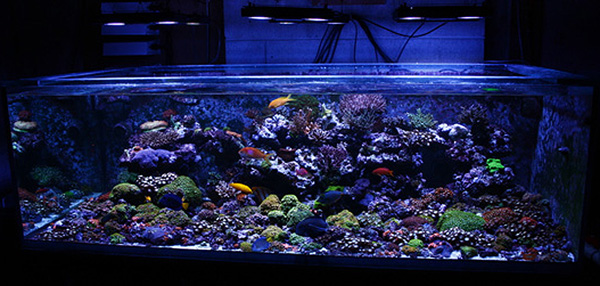 |
Introduction
It has been a real honor having the opportunity to share my 250 gallon mixed reef with the fine assortment of individuals that make up Reef Central. Being selected as TOTM has always been one of my aspirations. I’m humbled to say the least that I now have the opportunity to formally share my passion with the rest of the reefing community.
One factor that distinctly separates my reef is that it isn’t actually “my” reef, instead I use the preposition “our” reef as I have had the perspicuous pleasure of being dealt a 19 year-old brother that avidly shares my passion for reefing. Having two opinions constantly at play has made for some interesting arguments but I attribute my success to his constant whining and complaining. All kidding aside the system is a unique combination of both of our reef keeping methodologies and merges his passion for keeping SPS with my addiction to the order Zoantharia.
Background
I’m a 22 year old 3rd year Bachelor of Science student currently studying Cellular and Molecular Biology at Mount Royal University. I sm single and have no children, I blame my addiction for this. Like most reefers my roots hold true to fresh water, from Arowana to Piranha, Pleco to Zebra Danio, you name it and I have probably kept it. So what caused the swap to saltwater you may ask? About five years ago I was breaking down one of my fresh water tanks and needed to drop off some African Cichlids, I walked into a grungy little LFS and was instantly captivated by all the colorful “Rocks”. I biffed on the slippery slope that is reefing then and stand in front of you a fully blown addict today.
My tank progression has been an arduous one greased with the frightening fact that I worked at a LFS for a few years, my start of a 28 gallon JBJ Nano cube quickly progressed to a 54 US gallon, the 54 gallon to a 165 gallon and finally the 165 gallon to the 250 gallon display you see today. Close to a year ago I was presented with the opportunity to move right next to my university, at first I thought this meant getting out of the hobby but was pleasantly surprised when my brother offered to merge our systems at his house. We took about a month to plan the new system and had two major goals in mind; first the tank had to be as low maintenance as possible and second everything needed to be fail-safe. The upgrade was an amazing opportunity to incorporate and amend features lacking in our previous tanks. Notably internal overflows, automatic dosers and unreliable internal return pumps were replaced with an external overflow, a calcium reactor and an external Reeflo dart.
I’m lucky to say the break down and swap over of both of our existing tanks went flawlessly, we contemplated doing it in multiple steps but opted for a quick move to ensure we didn’t run into aggression issues adding our pre-existing fish. The main system was prepped and filled with 200g of freshly mixed salt water the night previous to the swap, the following morning at 6:00am we got to work and didn’t finish until around 1:00am that night. Brand new aragonite sand was added to the display as all existing sand was transferred to the refugium, this forced us to keep the fuge isolated for roughly a week to ensure we could remove any built up containment's (such as hydrogen sulfide) through water changes.
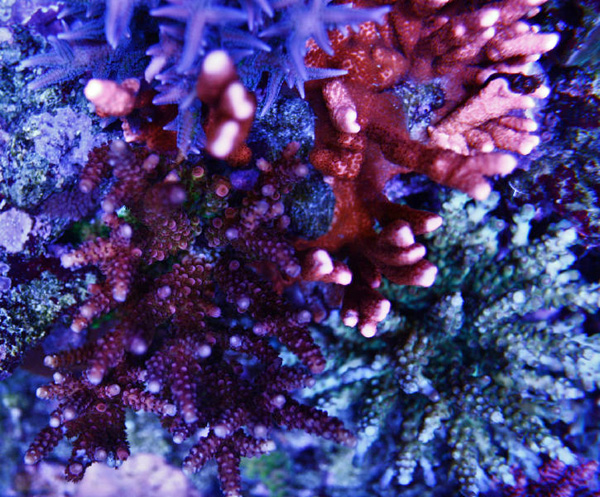 |
Current Tank
The systems total volume is 402g and consists of a 247g display, 75g refugium and 80g sump. Water is pumped from the sump to the main tank where it overflows into refugium and then directly back to the sump. The display overflow has three drains, this allows us to isolate the refugium as needed and ensures were protected in the case of a clogged pipe.
Maintenance:
• Bimonthly 15% water changes using Reef Crystals Brand Salt.
• Monthly change of carbon & GFO.
• Skimmer & filter socks cleaned weekly.
• Mangroves are misted daily (will be purchasing an automatic misting system in the near future).
• Fish are fed 1-3 times daily, coral 1-3 times weekly.
• Every 6 months our CO2 tank needs to be refilled, at this time we also swap the media out. Extra NeoMag Magnesium reactor media is added to compensate for the mangroves.
• Glass is cleaned as required.
• Zeovit Coral Vitalizer, Coral Snow & Sponge Power are dosed periodically.
System Profile
• Display tank: 247 US gallon custom Red Coral Aquarium (6' x 3' x 22")
• Sump / Refugium: 80 US gallon baffled sump (4' x 2' x 16"), 73 US gallon refugium (4' x 22" x 16")
• Skimmer: Vertex IN-280 In-Sump
• Lighting: 6x EcoTech Radion LED Modular Fixtures
• Flow: 4x Ecotech MP40
• Controller: Aquacontroller Jr.
• Return Pump: Reef Flo Dart
• Heating: 2x 300W Aquaheat Titanium Heaters
• Calcium Reactor: Vertex RX6-DUO + 10lb CO2 Tank
• Other Reactors: Rowaphos in BRS upflow reactor, ROX or Zeovit in BRS upflow reactor, Tunze 5017 ATO
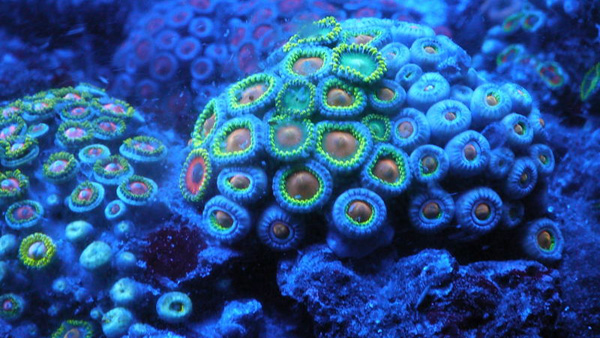 |
Natural Methodology
I’m a strong believer that success in a tank is dependent on accumulating healthy nutrient sinks and sources over a gradual period of time. Establishing a healthy equilibrium between the two not only ensures the stability and health of our fish and corals but more importantly the absolutely diverse micro fauna that inhabits our systems. A highly controversial topic while planning the tank was our approach on quarantining and dipping coral, like most aspects of the tank a healthy compromise was reached that ensures biodiversity is preserved while pest species are kept at bay. My biggest concern with dipping is its indiscriminate ability to kill micro-organisms and bacteria that are essential to creating a pro-biotic system. Ensuring a diverse supply of these organisms is pivotal as they are essential for nutrient turn over and conversely a healthy tank. When a new piece of coral is introduced to the system an intensive inspection is completed followed by a thorough shake off in the fuge, if no pests are found the piece is introduced directly to the main tank. This method not only preserves valuable microfauna but ensures the coral itself isn’t stressed from harsh dipping agents.
Arguably the most important nutrient sink in a reef is presence of healthy and established live rock. I feel a major contributor to our success was due to both of our tanks being filled with diverse and porous rock that had been in a reef setting for some time. Liverock from my previous 165g was kept submerged during transport to prevent die off of coralline algae, sponges and bacteria which could decompose and cause a fatal nutrient spike.
Another important feature I have always employed in my systems is a tank I termed the “Mangrovefugium”, essentially a giant natural filter this remote tank utilizes a deep sand bed, Red Mangroves (Rhizophora mangle) and macro algae to remove excess nutrients from the water. Our current Mangrovefugium is a 73g 4’ tank containing a 12” deep sand bed equivalent to approximately 460kg, the tank also houses 35 mature Rhizophora mangle pods and around 10 different species of macro algae. Lighting is provided by a single 400W HPS 10000k grow bulb and 2 54W actinic bulbs run for five hours daily. Mangroves naturally go through a process of apoptosis (programmed cell death) where they pump excess salt into a select leaf to maintain internal osmoregularity, ensuring proper magnesium levels, frequently misting and removing dead leaves are all essential to keeping your mangroves healthy.
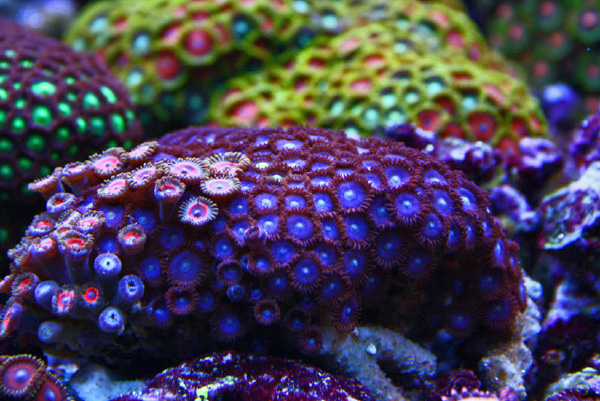 |
Feeding
The tank is provided with a myriad of food sources multiple times daily, this ensures all inhabitants get their healthy share. I’m strongly anti-quarantine and a big believer that healthy plump fish have the ability to fight off infection on their own. Frozen food, nori and pellets are all soaked in Selcon & Garlic Gaurd prior to being added to the tank and the mixture is fed approximately 3 times daily.
What’s on the Menu:
• Spirulina Enriched Brine Shrimp.
• Mysis Shrimp.
• Cyclop-eeze.
• Ground Muscle, Prawn and Oyster.
• Nori.
About two years ago I started experimenting with night time water column nutrient saturation, I highly recommend it to anyone looking for improved growth and color in their coral. The procedure involves a fair amount of nutrient addition so ensuring healthy nutrient sinks is essential otherwise a nutrient overload could easily lead to a crash. Like all concepts in a reef tank taking your time will provide you with the best results and allow your system the vital time required to produce additional bacteriobiomass. It should also be noted that smaller systems or systems with little water surface area should not have their skimmer turned off during the night, because this paired with the photorespiratory swap in algae could result in dangerously low dissolved oxygen levels.
Feeding Procedure:
• In approximately 250ml of tank water mix thawed cyclopeeze, Reef-roids and Oyster ovarian tissue/ eggs.
• Add your liquid components (I personally use Selcon and Aquavitro Fuel by Seachem).
• Let the mixture stand for around an hour.
• Remove filter socks & unplug your protein skimmer.
• 5-10 minutes prior to your lights going off broad cast feed the mixture in high flow.
• Reduce your flow to approximately 50% of your day time values.
• In the morning add a fresh filter sock, plug your skimmer back in and restore flow.
• Repeat 1-3 times weekly.
It’s completely natural for your corals to slime excessively during this period, saturating the water column ensures vital nutrients are absorbed into the slime. As the night progresses the coral will draw this mucous net loaded with vitamins, amino acids and proteins into its gastrovascular cavity providing it with valuable nutrients. I initially started this method as a way to provide nutrients for my zoanthids but have since seen dramatic results in my LPS and SPS corals.
Recommendation
So you wanna keep Zoantharia eh?:
Here are a few helpful hints:
• Studies on Zoantharia nutrition tend to be few and far between but generally identify dissolved organics and bacteria as large contributors of nitrogen and carbon not acquired through photosynthesis. Having a healthy system which can easily turn nutrients into bacteriobiomass works wonders for zoanthids. In addition to the bacteria, fish waste and detritus is routinely captured by species from the families Parazoanthidae and Sphenopidae while Zoanthidae tends to rely more on photosynthetic processes. Identifying the family helps identify what care is required, this unfortunately is not an easy task for beginners and experts alike.
• Zoantharia as an order tends to be vastly diverse so you need to find the correct light & flow for each colony. Anyone claiming to have the ability to keep every morph of zoanthid happy is flat out lying, a recent study out of Japan noted natural mortality rates close to 40% in the species Zoanthus sociatus, as hobbyists we can only strive to improve on numbers like this. Many zoanthids have horrible track records in captivity, these are usually the sought after ones adding to the frustration. Aquacultured corals just like SPS tend to be a little more resilient so buying cultured is the best way to go.
• Flow is pivotal, although branded as beginner coral high variable flow mixed with strong lighting is highly beneficial for pretty much all species belonging to Zoantharia. This allows for detritus to be removed from the coenenchyme and provides a constant supply of required dissolved compounds.
• Actinics make the pigments in Zoanthids fluoresce, the bluer the spectrum the more "pop" you get. There is a trade off with growth and color so finding the sweet spot is a tricky ordeal.
• Keeping wrasses from the genus Halichoeres and having a healthy wrasse population in general is a powerful way to combat zoanthid pests. Wrasses actively seek out and hunt bristle worms, copepods, amphipods, nudibranches and a whole assortment of inverts that could potentially irritate your polyps. In a tank full of infectious microbes irritation of your zoas is the enemy!
• A few Asterina starfish species do prey on zoanthids, we were initially not removing them from new additions but have since changed our stance after they reached plague proportions. Of the three species that became prolific in our tank the larger red ones were found the most directly on zoanthid coenenchyme. We have since added a pair of Harlequin Shrimp (Hymenocera elegans) which have decimated the population, as these are obligate feeders they will require biweekly starfish feeding after all the Asterinas are gone.
|
Water Parameters:
|
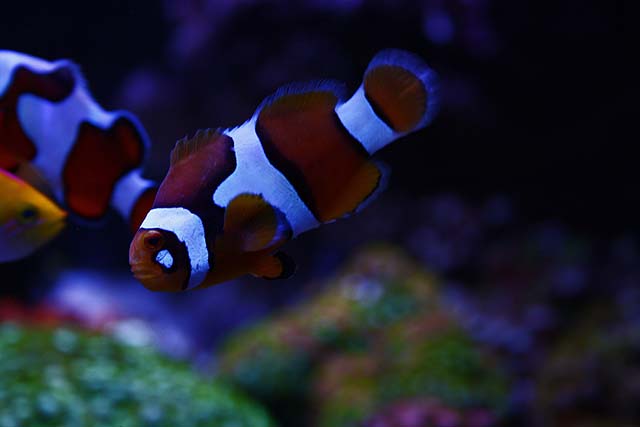 |
Livestock
My fish selection is based on personality, color, and compatibility with other fish and reef tank inhabitants. My goal is to have all the fish feel comfortable and to provide them with a healthy and stress free environment. I also like to have the larger fish graze in the tank so I avoid feeding Nori to the tangs and dwarf angels. I also keep a small group of blue/green reef chromis and a few anthias to add that extra movement to the tank and a splash of bright colors.
Approximately 100 different morphotypes belonging to the order Zoantharia (Including species from the following genera: Acrozoanthus, Isaurus, Zoanthus, Palythoa,Spenopus, Isozoanthis, Mesozoanthus, ect.)
Approximately 45 different morphs of SPS including species from the genera: Acropora, Pocillopora, Seriatopora and Montipora.
Approximately 5 different morphs of LPS including species from the genera: Blastomussa, Euphyllia and Echinophyllia.
|
Fish:
Invertebrates:
|
Acknowledgements
This feature couldn’t be possible without the support of Tony so a major shout out to him and the staff that make Reef Central possible. I also need to thank my brother Devan for his constant support and my step father Doug for letting me house this beasty in his basement. Kevin and the crew at Red Coral Calgary have saved me in more than one jam so a special thanks to them.
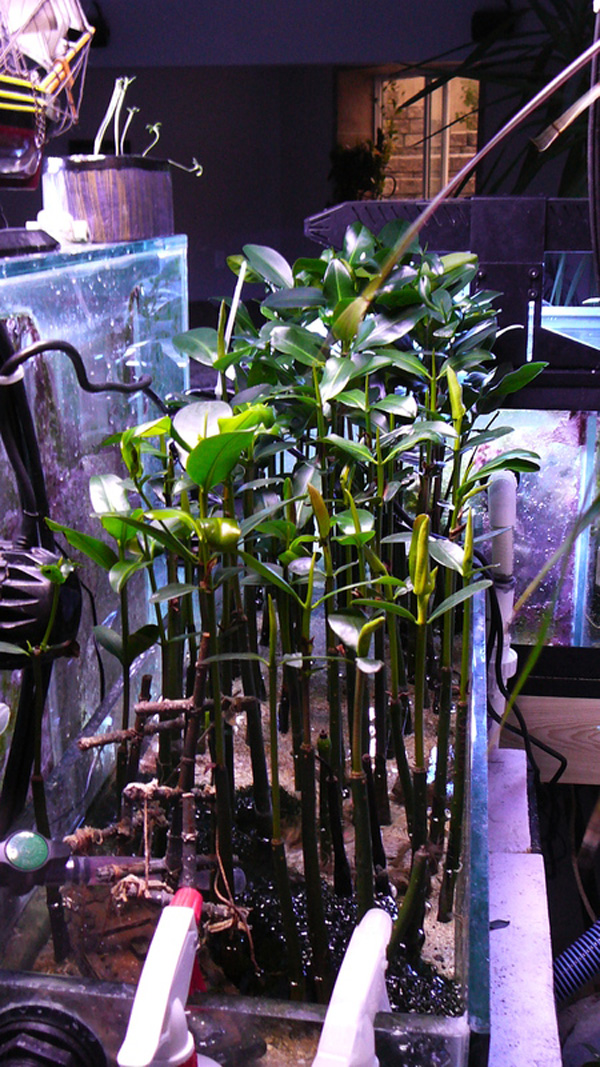 |
Feel free to comment or ask questions about my tank in the Tank of the Month thread on Reef Central.



